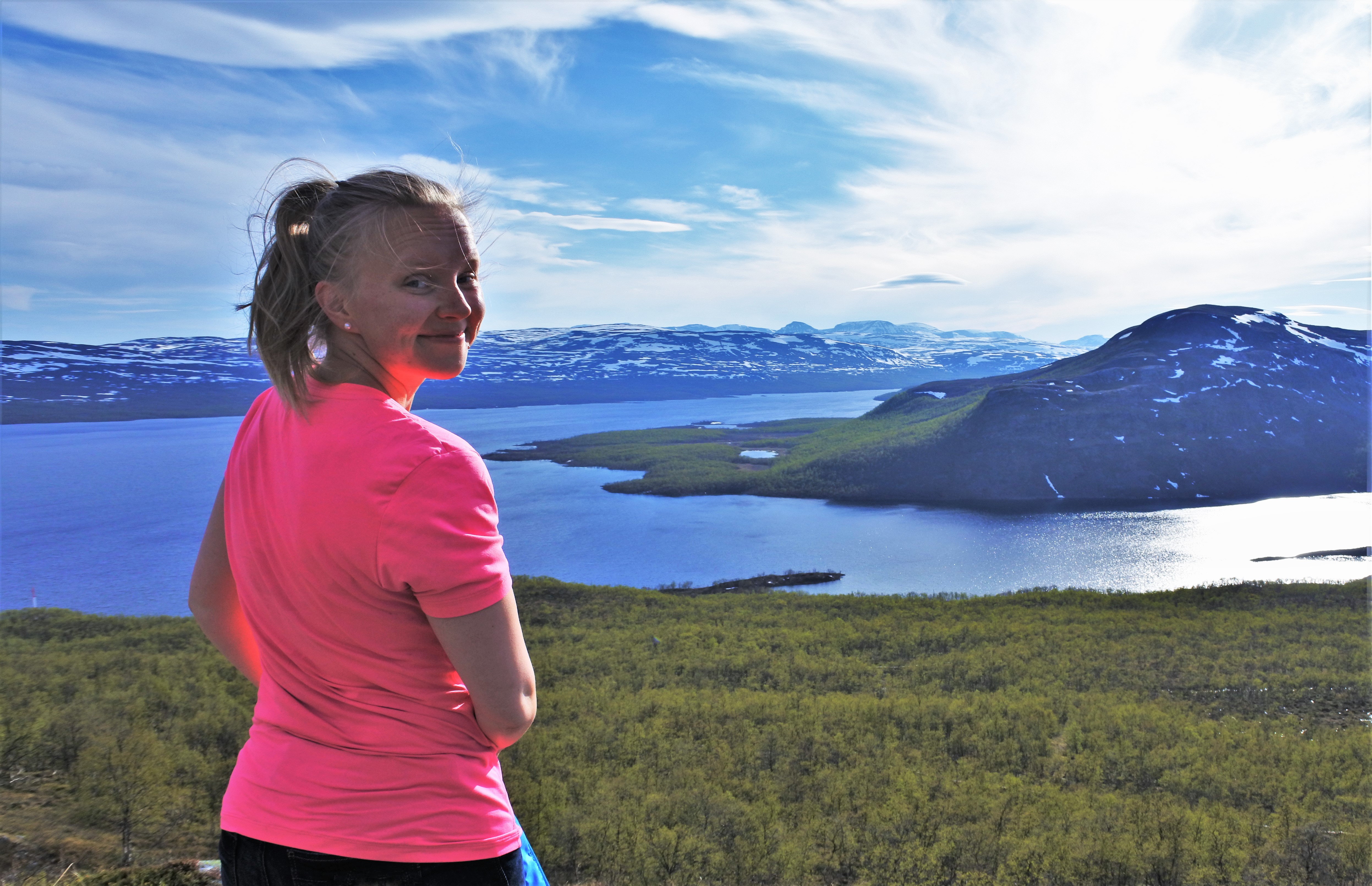
How were these landscapes altered by glaciers and fluvial erosion? And how does the current vegetation vary from hilltops to river valleys?
Arctic research is increasingly important because the Arctic is undergoing rapid environmental change. Climate is warming twice as fast in high latitudes compared to other regions of the world. As a result, changes in vegetation and permafrost extent and carbon cycling have been observed. Each field measurement is valuable to reveal how the landscape responds to climate change.
From 2014 on, I have spent my summers doing field work in northern Scandinavia as part of BioGeoClimate Modelling Lab from the University of Helsinki, Finland.
In my PhD at the University of Helsinki, I study the spatial variation of Arctic carbon dioxide exchange between the biosphere and atmosphere at local and pan-Arctic scales. My aim is to use high-resolution spatial datasets and develop modelling methods to upscale carbon dioxide exchange across the landscape. This will help us understand where the hotspots of greenhouse gas emissions are located. I will use everything from field studies to reviews (see examples here) as well as syntheses to understand carbon cycling as broadly as possible.
I am happy to encounter the scientific community now as large amounts of Arctic studies and data sets have been published in the past decades. All this accumulated knowledge can now be merged and synthesized by researchers to understand the bigger picture, i.e. to see a forest for the trees. We have seen an increase in synthesis studies during the past years.
Only this year, there have been several tundra reviews and syntheses published for example in the journal Nature, addressing issues as the current extent of Arctic terrestrial environmental field studies, or merging tundra trait observations into a database of over 90 000 observations to study the drivers of tundra plant functioning. I am happy to have been part of some of these efforts and continue to be so as I am currently finalizing a carbon dioxide exchange synthesis manuscript.
As I was conducting the last field measurements for my PhD last year in northern Finland, I was once again looking at the landscape and I realized something in my mind has changed. I am not only interested in how the landscapes have evolved and function in current conditions, but I am also worried about how they will change in the future.
Luckily, I know that there are many other scientists in different collaboration efforts such as in IASC studying these landscapes. Together we can unravel answers that will help us understand the changes driven by climate warming.
Photo:Julia Kemppinen
Get in Contact!
E-mail: anna-maria.virkkala@helsinki.fi
Twitter: @annvirkk
IASC Fellowship Program
The IASC Fellowship Program is meant to engage Early Career Scientists (ECS) in the work of the IASC Working Groups (WGs). IASC Fellows are doctoral or postdoctoral researchers who actively participate in selected activities of the IASC WGs. The total duration of the IASC Fellowship Program is 1+2 years. After the first year the Fellows have an opportunity to stay involved up to 2 more years; further involvement is individually decided by the WG Steering Group and the Fellow.
The IASC fellowship Program opens for new candidates every year around October and is due mid-November. The call and the selection is held in collaboration with APECS.
For more information click here or contact the IASC Fellowship Coordinator Maja Lisowska.
